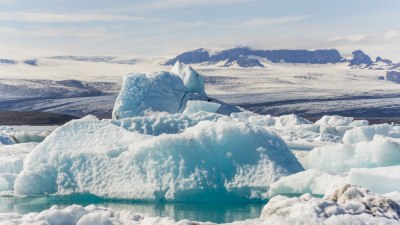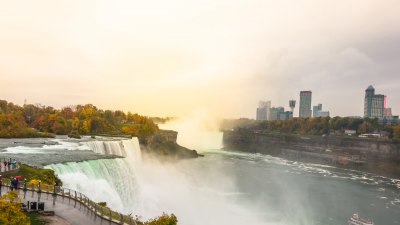Why the Arctic Has 24 Hours of Daylight, but You Still Need a Jacket
Discover the fascinating reasons behind Arctic's continuous daylight and the chilly temperatures despite the sun's presence.

The Arctic region is a land of extremes, where during certain times of the year, the sun doesn't set for an entire 24 hours. This phenomenon, known as the Midnight Sun, occurs in areas north of the Arctic Circle, impacting countries like Norway, Canada, and Russia. While many flock to these regions to enjoy the surreal experience of daylight at all hours, it often comes as a surprise that one still needs a jacket regardless of the perpetual sunshine. In this article, we will unravel the mysteries of the Arctic’s summer daylight and the underlying climatic factors that keep the temperatures low.
The Science Behind the Midnight Sun
To understand why the Arctic experiences this unique phenomenon, one must grasp the Earth’s axial tilt. The Earth is tilted at approximately 23.5 degrees axis in relation to its orbital plane around the sun. This tilt results in varying sunlight exposure across different latitudes throughout the year. During the summer solstice, around June 21st, the North Pole is tilted towards the sun, enabling areas above the Arctic Circle to soak in sunlight continuously for several weeks. Conversely, during winter months, these same regions are deprived of sunlight entirely, experiencing Polar Night.
Factors Influencing Arctic Temperatures
While the concept of basking in sunlight for prolonged periods sounds inviting, the Arctic environment is inherently cold. Several factors contribute to this paradox of warmth and chill. Primarily, the latitude plays a significant role. The Arctic regions receive sunlight at a much lower angle during the summer months, resulting in less intense solar radiation, which cannot compensate for the existing cold temperatures. The sunlight’s energy is spread over a larger surface area, diluting its warming potential.
Moreover, the Arctic Ocean, covered in ice for a significant part of the year, reflects a substantial amount of sunlight back into space - a phenomenon referred to as 'albedo effect.' This means that much of the sun’s energy doesn’t get absorbed to warm the land. Instead, it’s the surrounding water bodies and ice that largely dictate the temperatures experienced in Arctic regions. As these areas undergo melting during the summer months, they also contribute to maintaining cooler temperatures as the melting ice absorbs heat instead of raising the environmental temperature.
Impact of Sea Ice on Climate
The presence of sea ice has significant implications for the climate in the Arctic. Sea ice creates its microclimate, affecting local weather patterns and the overall temperature balance of the region. As sea ice melts, it affects global ocean circulation patterns and contributes to climate changes across the globe, including coastal temperatures. The ice acts as a barrier, insulating the colder water beneath from the warmer air above. When ice levels drop, there’s an increase in exposed water surface, which can still read temperatures well below freezing even under 24-hour daylight conditions. In essence, less ice equals more heat escape from the ocean, which doesn’t lead to warming, but rather a chilling effect.
The Role of Atmospheric Conditions
Atmospheric conditions are another major factor in understanding why the Arctic still feels cold despite the sunlight. The Arctic region is known for its high-pressure systems, which can bring clear skies and sunshine but are often associated with cold air temperatures. The presence of polar air masses dominates the weather patterns in these areas, causing local air temperatures to remain frigid. Furthermore, as climate change progresses, the Arctic is experiencing shifts in weather patterns, with increased variability leading to extreme chilled spells making jackets a necessary item.
Additionally, the dry air prevalent in the Arctic can contribute to a skewed perception of temperature. While bright sunlight may create an illusion of warmth, low humidity levels cause the air temperatures to feel much colder than they actually are. This dry cold can seep through clothing, making it essential for those venturing into the Arctic environment to bundle up.
The Importance of Dressing Appropriately
For individuals planning to visit the Arctic during the summer months, wearing a jacket remains critical. Not only do the temperatures hover in the range of 0 to 10 degrees Celsius (32 to 50 degrees Fahrenheit), but wind chill can make it feel cooler. Moreover, layering is key when dealing with Arctic temperatures, as conditions can shift from relatively pleasant to chilly in a matter of moments. Sporting insulated jackets, thermals, and windproof layers ensures that adventurers are well-prepared to combat these sudden temperature fluctuations.
Another aspect to consider is the global warming trend, which continues to affect Arctic ecology. As temperatures rise, the delicate balance of the sensitive Arctic ecosystem is disrupted, impacting both flora and fauna and leading to unpredictable weather patterns. Therefore, while exploring the beauty of the Arctic landscape bathed in the striking light of the Midnight Sun is a memorable experience, travelers must respect the region’s inherent cold and unpredictable nature.
Unique Wildlife Adaptations
The Arctic is home to unique wildlife that has adapted to thrive under these extreme conditions. Animals such as polar bears, Arctic foxes, and various species of seals have developed thick insulating layers of fat and fur to maintain their body temperatures amidst the harsh climate. These adaptations not only allow them to survive but also illustrate the evolutionary responses to the complex interplay between sunlight and temperature. In the absence of daylight during certain months, these animals also rely on innate behaviors and biological rhythms to hunt for food and reproduce. This symbiotic relationship with their environment highlights the delicate ecology of the Arctic region.
The Arctic's enchanting experience of 24 hours of daylight is a mesmerizing testament to the complexity of our planet's climate systems. While basking in sunlight sounds inviting, the region's cold temperatures remind us of the delicate balance of ecosystems and the significance of understanding climate dynamics. The interplay between sunlight, geographical features, atmospheric conditions, and wildlife adaptations makes the Arctic a unique environment that captures the imagination while also demanding respect for its natural elements. So, the next time you find yourself in the Arctic, don’t forget your jacket; the sun may be shining, but the chill remains a steadfast companion in this captivating land.











